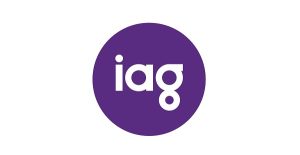The latest results from Australian firm IAG indicate that gross written premiums rose 5.7% between FY 2021 and FY 2022.
 However, the firm reported that its insurance margin of 7.4% was lower than its expectations.
However, the firm reported that its insurance margin of 7.4% was lower than its expectations.
That was because, it wrote in the results, of higher natural perils costing $1,119m against its allowance of $765m, a $45m negative credit spread impact and a $172m strengthening of prior year reserves.
The underlying insurance margin was 14.6%, where the previous year had seen this figure stand at 14.7%.
Net profit after tax was $347m (FY21: $427m loss), reflecting the performance of the underlying core business and a $200m pre-tax release from the business interruption provision.
Writing in the report, Nick Hawkins, managing director and CEO of IAG, said: “Our FY22 financial results reflect the quality of our underlying business as we build a stronger and more resilient IAG. We had strong GWP growth, and the performance of our business was steady despite the challenging external environment.”
Hawkins drew particular attention in his remarks to the role of climate change and its impact on the industry.
He wrote that it was one of the most-important challenges now being faced, adding: “FY22 was one of the most significant peril years we have experienced, with multiple events in Australia and New Zealand, including the February 22 floods in northern New South Wales and along the east coast. Across Australia and New Zealand, claim lodgements relating to extreme weather events in FY22, more than doubled over the prior year. To deal with the increasing severity and frequency of extreme weather events, we have put in place our largest to date perils allowance, increasing it by 19% to $909m for FY23.”
Looking ahead, IAG said it was looking at mid-to-high single digit GWP growth and a reported Insurance margin of 14% to 16% for FY 2023.
Hawkins said: “Our FY23 guidance aligns to our aspirational goals to achieve a 15% to 17% insurance margin and a reported ROE of 12 to 13% over the medium term. These goals encompass our ambitions around increasing our customer base by 1m to 9.5m by FY26, an insurance profit of at least $250m by FY24 in our Intermediated Australia business, further simplification and efficiencies to maintain the Group’s cost base at $2.5 billion, $400m in value from DIA claims and supply chain cost reductions on a run rate basis from FY26, and higher customer interactions through the company’s digital channels.”
He added: “We are well placed to manage the inflationary pressures in the year ahead through initiatives such as the Motor Repair Model and Home Claims Assist Pilot. We are establishing the next evolution of claims program, which will differentiate us by delivering superior service to our customers through automation, digitisation and most importantly, customer empowerment. The next evolution of claims untaps the potential around customer empowerment and is one of many initiatives that will aim to deliver $400m worth of value to IAG.”
In recent weeks, the firm has been served a class action around its business interruption claims around Covid.
Reinsurance News reported at the beginning of the month that the firm had confirmed its had been served with a class action filed in the Supreme Court of Victoria on behalf of persons who acquired shares in IAG during the period 11 March 2020 and 20 November 2020. The firm confirmed at the time that it would be defending the proceeding.
Back in March of this year, IAG stated that there would be no adjustments to its $1.222bn net provision for potential business interruption claims related to the COVID-19 pandemic.
This followed a February decision by Australia’s High Court to upheld the arguments of insurers in a BI legal case by finding that in the majority of cases, insurers are not liable to indemnify policyholders.
While positive for carriers, the judgement did also find that certain businesses could make valid claims on pandemic losses on certain limited policies, provided the cause of losses could be identified.
This led to several insurers and reinsurers, including IAG, Swiss Re and Chubb, to look to contest the verdict of the pandemic test case.


